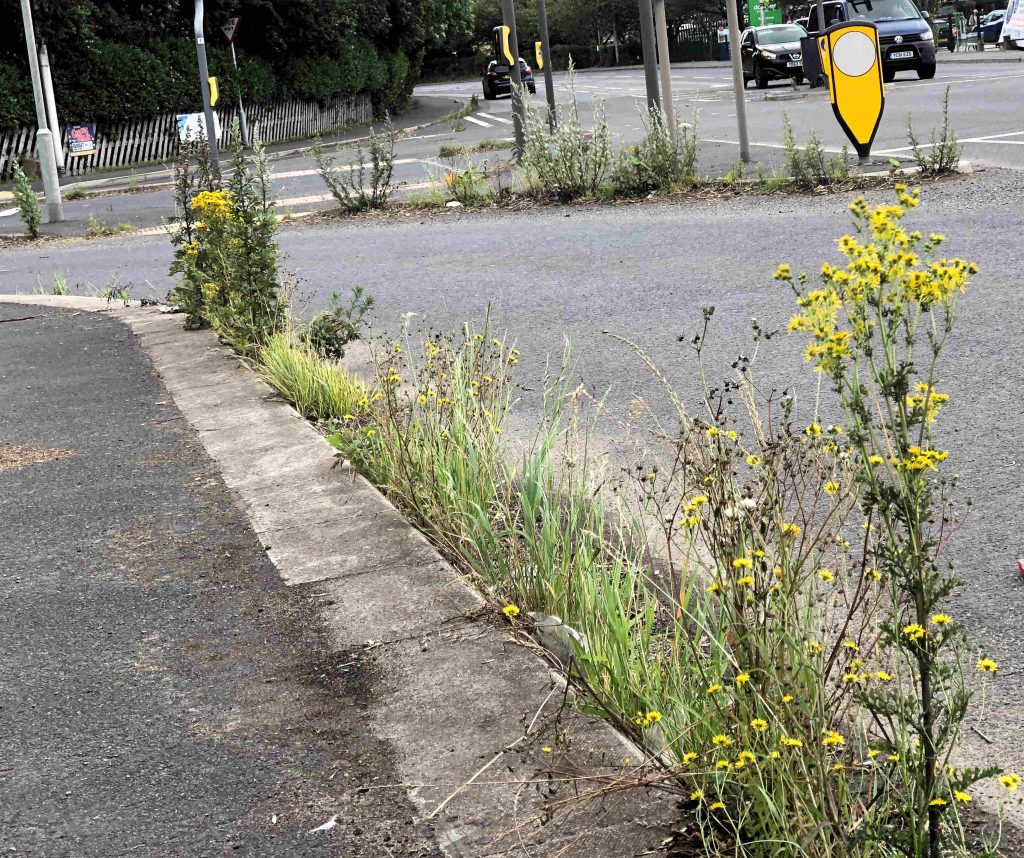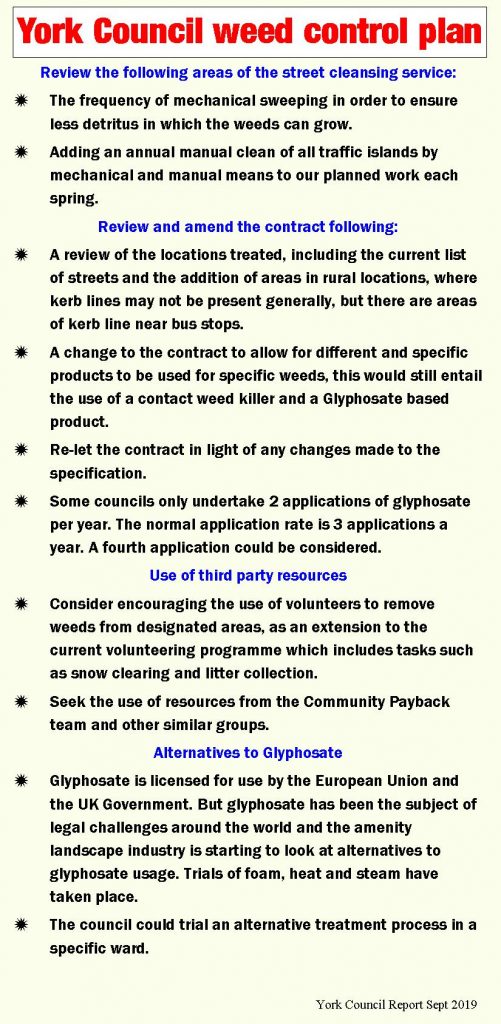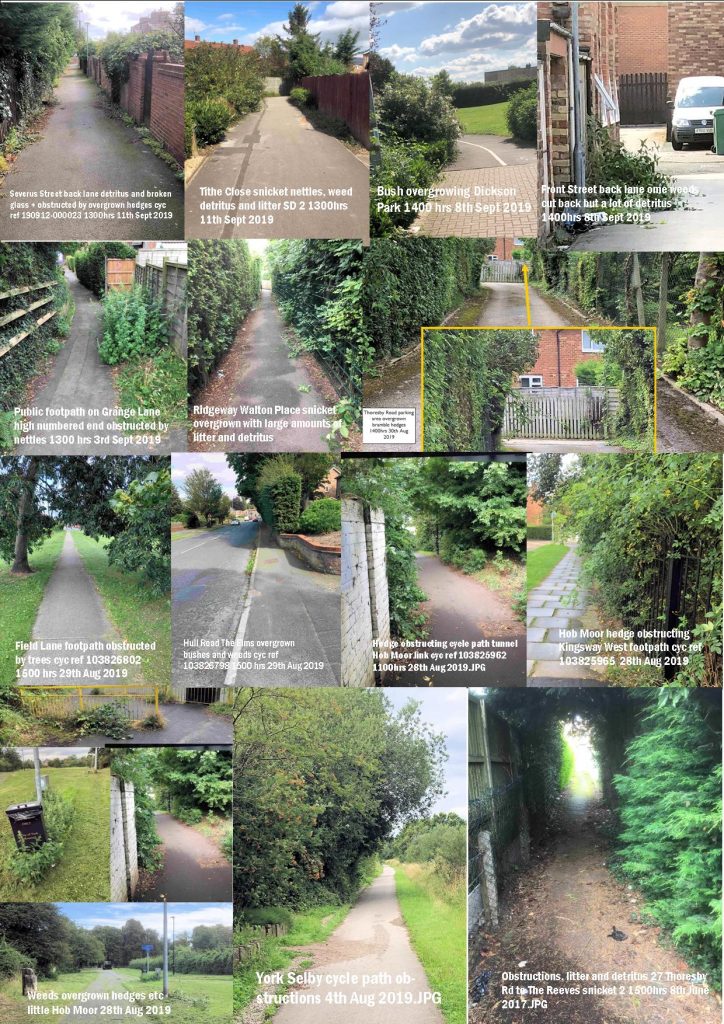The long awaited report, into the collapse of weed control activities in the City this summer, has now been published.

The report lists several actions which might be undertaken to prevent a repetition of the problems.
It was clear as long ago as June that something was seriously amiss with the Council contract.
A contract has been let which had omitted several key roads like the A59, as well as many back lanes and paths. Gutters and paths rapidly become overgrown. In some cases, because of restricted sight lines or trip hazards, there was an unnecessary risk to public safety.
Amongst the worst affected were major entry points into the City which gave visitors an early impression of neglect (It became clear later, that former trunk roads were amongst these omitted from the contract)
The Councils reaction to the problems was highly complacent. It was two months before they admitted that the list of streets to be treated by the contractor was out of date. They blamed the weather (too much rain) and turned a blind eye to the fact that the “quad bike” contractors were missing out large areas altogether. Treatment, where undertaken, proved to be ineffective.

It was Septembers before the failings were finally acknowledged. Contractors were asked to add a blue dye to the chemical so it would be clear which areas they had treated.
To this day, residents continue to search for the illusive blue dye trail.
Another problem was the choice of weed killer. Glyphosate, which is a contact weed killer, has no residual effect, so it only kills weeds present at the time of application. It is an industry standard product, but it failed to act on deep rooted weeds. Alternatives were available but not used.
The Council claims to have “deployed additional resource to focus on removing detritus which collects in kerb lines, particularly on the offside of traffic islands where sweeping is more difficult and less effective. The detritus build up is greater when weeds are present”.
The report doesn’t analyse how the Council came to issue an incorrect contract specification, doesn’t reveal the results of supervisory checks on the contractor, offers no update on the September recovery programme and fails to review “difficult to reach” locations such as bridge parapets, snickets, back lanes and garage forecourts.
The contract required certain outputs to be achieved. These included a 98% weed free appearance on treated areas.
No KPIs are quoted.
The Council has however listed 10 initiatives (see right) that it could take to improve the appearance and safety of the City.
All, and more, will be required next year if the reputation of the City is not to be further damaged.

